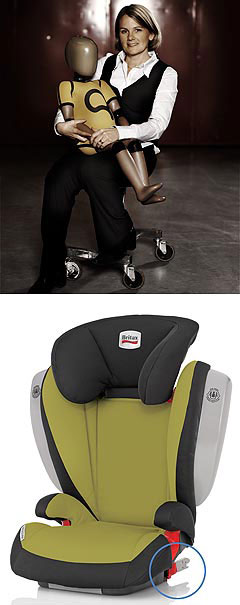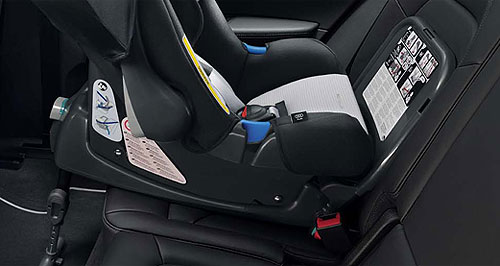Make / Model Search
News - General NewsAustralian government gives Isofix the nod at lastComing soon: The Australian government has paved the way for the introduction of Isofix child seats in the local market. Fitment of international-standard Isofix child seat system finally legalised in Oz30 Mar 2012 FIFTEEN years after its adoption in Europe, the Australian government has at last introduced a new safety standard that will allow the use of the internationally advocated Isofix child restraint system. However, Australian parents will have to wait another year before they are legally allowed to fit Isofix-compliant child seats, with Standards Australia not expected to complete the introduction until early 2013. Under the Isofix system, child seats are held in place via a pair of rigid lower anchorages matched to either a roof tether or a floor-mounted prop. This is compared to the more complex belt-and-tether system currently mandated in Australia. Parliamentary Secretary for Infrastructure and Transport Catherine King said in a statement that “for many parents this means child restraints will be easier to install while maintaining a high level of safety for their children. “This clears the way for Australian child restraints to include these new compatible features.”  Left: Volvo safety chief Lotta Jakobsson. Below: An Isofox-compatible child seat (clip in the blue circle). Left: Volvo safety chief Lotta Jakobsson. Below: An Isofox-compatible child seat (clip in the blue circle).Many new passenger vehicles sold here in the past decade or more have Isofix latch points mounted to the rear row of seats, despite the fact that it is illegal to use them to affix a child seat. Until now, the lack of regulations for Isofix has been one of the few local design rules not yet aligned with European standards. Isofix was introduced to Europe in 1997, and a slightly modified version called LATCH became mandatory in the United States in 2002. The decision is in line with advice given by many global safety experts, including Professor Lotta Jakobsson, the technical leader of Volvo’s Safety Centre at Gothenburg in Sweden. Prof Jakobsson advocated the adoption of the Isofix system in an interview with GoAuto last year. She pointed out that while the current Australian system was no less safe if fitted correctly, Isofix was preferable because it is easier to use. As evidence, she cited a study by the RACV from 2004 that found as many as 70 per cent of restraints that currently comply under Australian Design Rules (ADRs) may be incorrectly installed. “It’s not the technical functions of the safety system as such,” she said at the time. “If you fit a child seat with the belt properly, you will get the same crash performance. “I wouldn’t say Isofix is a safer attachment given that you’ve done the right routing of the belt. That means if you are just looking at crashworthiness in a laboratory you might end up with the conclusion that it is not worthwhile. The current Australian system, in which child restraints are held in place by the car’s seatbelt along with a top tether strap fixed to an anchor point, will be allowed to remain, opening the door to the kind of ‘combination’ system advocated by Prof Jakobsson. “I think in Australia people are quite well trained to try to get this top tether routed,” she said, “so it would make no sense to take it away. “It’s more a question of making the rest of the system as easy. I would like the rigid attachment for the lower anchors and the flexible top tether would be the ideal for you.” Isofix was co-developed by UK-based manufacturer of automotive safety equipment Britax and Volkswagen for the fourth-generation Golf model. Volkswagen Group Australia general manager of press and PR Karl Gehling today welcomed the decision, telling GoAuto: “From our perspective, we think it’s a long overdue decision and we’re pleased that there will be a more safe and reliable child seat technology available for everyone in the not-too-distant future. “The Australian system, whilst it was revolutionary when it was first introduced and was a big advancement in child seat safety, is no longer the most reliable system, and that’s been highlighted by the fact that a lot of research has shown that in the order of two-thirds of child seats are incorrectly mounted.”  Read more |
Click to shareGeneral News articlesResearch General News Motor industry news |











Facebook Twitter Instagram